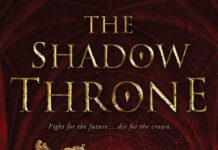In the raw, unfiltered pages of The Basketball Diaries, Jim Carroll offers a haunting glimpse into the turbulent crossroads of youth and addiction. This memoir, part diary, part confessional, chronicles the poet and musician’s descent and fight against the shadows of drug abuse amid the backdrop of New York City’s gritty streets. As a narrative that blurs the lines between innocence and experience, Carroll’s work invites readers to navigate the complexities of adolescence marked by both passion and peril. This review explores the enduring impact of The Basketball Diaries, examining how its candid portrayal continues to resonate in conversations about youth, vulnerability, and the destructive allure of addiction.
Exploring the raw portrayal of adolescence and addiction in The Basketball Diaries through Jim carroll’s unfiltered narrative style

Jim Carroll’s narrative dives deep into a landscape where innocence collides with the harsh realities of addiction and urban life. His prose strips away any romanticism often associated with coming-of-age stories,presenting instead a brutal,yet candid,account of a young man caught in the throes of drug dependency. This unflinching honesty reflects in the fragmented, almost poetic style of his writing, which mirrors the chaotic rhythm of adolescence - a time when self-discovery is as turbulent as it is desperate. Carroll’s memoir challenges readers to confront the uncomfortable truths behind the glamorized myths of youth rebellion, portraying not just the highs of fleeting freedom, but the devastating lows of addiction’s grip.
What makes Carroll’s approach profoundly compelling is his use of vivid imagery intertwined with raw emotional vulnerability, creating a narrative that is both immersive and unsettling. The memoir transports readers to a world where every moment pulses with intensity, whether it’s the adrenaline of street basketball games or the numbing escape offered by heroin. Through this lens, addiction is depicted not only as a physical affliction but as a poignant metaphor for the struggle to find meaning and connection. Below is a brief overview highlighting key elements of Carroll’s narrative style:
- Unfiltered Language: Direct and unapologetic, conveying authenticity.
- Fragmented Structure: Reflects the erratic nature of youth and addiction.
- Poetic Imagery: Evokes vivid scenes that linger in the reader’s mind.
- Emotional Depth: Exposes raw feelings of hope, despair, and rebellion.
| Aspect | Effect on Reader |
|---|---|
| Raw Honesty | Creates empathy and harsh realism |
| Disjointed narrative | Mimics adolescent turmoil |
| Visual Metaphors | Enhances emotional resonance |
| Autobiographical Depth | Builds authenticity and trust |
Themes of desperation and hope intertwined in the vivid memoir reflecting youth struggling with identity amidst substance abuse
Jim Carroll’s memoir unfolds as a raw tapestry where despair and hope dance inseparably.His vivid prose captures the turbulent moments of adolescence marked by a desperate search for self amid the grip of addiction. The pages pulse with an honesty that exposes the fragility of youth – the craving for acceptance, the struggle to define identity, and the constant battle against inner demons. Yet, woven through the darkness, Carroll’s voice pulses with glimpses of resilience, a reminder that even in the depths of chaos, the human spirit yearns for redemption.
This compelling narrative is not just a chronicle of addiction,but a delicate balance between loss and possibility. The memoir offers:
- Unflinching honesty: confronting addiction without glamorization.
- Emotional complexity: showcasing vulnerability and the fight for self-acceptance.
- Reflections of youth culture: the era’s gritty backdrop shaping choices and consequences.
The delicate interplay between desperation and hope in Carroll’s journey reminds readers that identity is often forged in conflict - a relentless pursuit that refuses to be buried beneath the weight of addiction.
Analyzing the impact of urban 1970s New York City as a backdrop amplifying the chaos and energy in Carroll’s coming-of-age story

The gritty, unruly streets of 1970s New York City serve not merely as a backdrop but as a pulsating character in its own right within carroll’s memoir. The city’s rawness – with its graffiti-laden subways, flickering neon signs, and the constant hum of restless energy - mirrors the tumultuous inner world of a young Jim Carroll. Urban decay and vibrancy collide, creating a paradoxical habitat that both entices and endangers. This chaotic milieu heightens the memoir’s tension, transforming every alley and basketball court into symbolic battlegrounds where innocence and addiction wrestle for dominance.
More than just scenery, the city’s relentless pace and unpredictability are reflected in Carroll’s fragmented memories and impulsive behaviors. The cacophony of honking horns, clashes of cultures, and flickers of neon light evoke the overwhelming torrent of emotions related to youth and vulnerability. The following elements illustrate this intimate melding of place and psyche:
- Urban Chaos: The perpetual noise and crowd density amplify feelings of suffocation and loss of control.
- Cultural Melting Pot: Diverse characters from all walks of life reflect the multifaceted challenges and escapes Jim encounters.
- Visual Grit: Stark contrasts between decay and fleeting beauty underscore the unpredictability of coming-of-age struggles.
| Urban Element | Impact on Narrative | Symbolism |
|---|---|---|
| Subway Scenes | Conveys feelings of entrapment and transition | Journey between innocence and experience |
| Street Basketball Courts | Spaces of fleeting escape and youthful camaraderie | Momentary control amidst chaos |
| Drug Dens and clubs | Heighten tension and depict the descent into addiction | Darker facades of urban allure |
The role of poetry and music as both solace and escape in the complex journey depicted throughout The Basketball Diaries

In Jim Carroll’s harrowing narrative, poetry and music emerge as lifelines amidst the turbulence of addiction and youth. They serve simultaneously as a means of solace-a soft refuge where raw emotions find voice-and an escape from the relentless pressure of a crumbling reality. Carroll’s lyrical verses, raw and unfiltered, paint vivid snapshots of his inner turmoil, transforming pain into poignant art. The words beat like a pulse beneath the chaos, grounding him while also revealing his fractured world. Meanwhile, the soundtrack accompanying his life, from gritty rock anthems to soulful melodies, acts as a companion that transcends his loneliness, evoking memories of freedom and fleeting hope.
Both art forms offer more than just distraction-they become vital tools for survival by fostering connection and expression in an otherwise isolating existence. Through poetry and music, Carroll channels his anguish and hunger for meaning, allowing readers to step into the recklessness and beauty of his youth. Key themes intertwine in this creative refuge:
- Emotional catharsis: Poetry as a conduit for unspoken feelings and unhealed wounds.
- Momentary liberation: Music as an ephemeral portal to freedom from addiction’s grasp.
- Identity formation: Artistic expression shaping self-understanding amid chaos.
| Art Form | Primary Function | Impact on Carroll |
|---|---|---|
| poetry | Emotional release and reflection | Amplifies inner voice and personal truth |
| Music | Escape and mood modulation | Creates moments of joy and solace |
A critical look at Carroll’s honest depiction of vulnerability and resilience in the face of addiction’s relentless grip

Jim Carroll’s memoir pierces through the haze of addiction with an unflinching honesty that refuses to romanticize or sanitize the harrowing journey of youth ensnared by drugs. His portrayal of vulnerability is raw and intimate-each page a window into a soul wrestling against overwhelming despair. Carroll doesn’t shy away from exposing the fragility beneath the bravado, painting addiction not as a dramatic spectacle but as an insidious force that relentlessly chips away at hope, identity, and the very essence of self. This candidness invites readers to confront uncomfortable truths, dismantling the stigma with a personal touch that resonates deeply.
yet, amid the relentless grip of addiction, Carroll’s writing is not devoid of resilience. The subtle sparks of tenacity scattered throughout the narrative underscore a complex interplay between downfall and endurance. It’s in these fleeting moments of strength-sometimes as simple as a desperate scribble in a journal or a fleeting dream of escape-that his spirit manifests. Below is a concise glimpse into the layers of vulnerability and resilience Carroll navigates:
- Vulnerability: Isolation,self-doubt,physical and emotional decay
- Resilience: Artistic expression,fleeting epiphanies,the will to survive
- Intersections: Moments where pain sparks creativity and clarity
| Aspect | Illustration in Memoir | Impact on Reader |
|---|---|---|
| Vulnerability | Relentless craving and withdrawal episodes | Evokes empathy and raw human connection |
| Resilience | Moments of poetic reflection amid chaos | Inspires hope beyond despair |
| Change | Writing as a lifeline and form of self-redemption | Highlights power of art in recovery |
symbolism and recurring motifs that deepen understanding of trauma and transformation in Jim Carroll’s memoir
Jim carroll’s memoir is punctuated by a tapestry of symbols and recurring motifs that serve as lenses into the harrowing landscapes of trauma and metamorphosis. The basketball itself emerges as a potent emblem of both escape and confinement-representing the protagonist’s fleeting glimpses of hope amid chaos. It becomes clear that the court is more than a physical space; it’s a battlefield where innocence clashes with addiction, and victory feels as elusive as recovery. Similarly, the urban decay of New York City acts as a backdrop mirroring Carroll’s internal desolation, its graffiti-scarred walls and shadowed alleyways echoing the patterns of self-destruction and despair cycling through his life. These recurring images invite readers to decode the complex interplay between environment and psyche that defines the journey from trauma to transformation.
Diving deeper,motifs such as fragmented dreams and cyclical repetition reinforce the idea that healing is neither linear nor guaranteed.Sleep, or the lack thereof, symbolizes a liminal space where Carroll’s psyche wrestles with memories too painful to fully confront or forget. These motifs are woven throughout the narrative, encapsulated in moments of violent clarity or surreal hallucination, intensifying the memoir’s raw emotional resonance. The pattern of relapse and fleeting redemption is underscored by the persistent return to dangerous substances, reflecting the overarching tension between surrender and resistance. Through these carefully layered symbols, Carroll not only chronicles a personal descent but also maps a universal passage through trauma toward an uneasy, uncertain transformation.
| Symbol / Motif | Meaning | Example from text |
|---|---|---|
| Basketball | Hope, Youth, Confinement | Games played before drug use escalates |
| Urban Decay | Internal Desolation, Chaos | Graffiti-covered walls reflecting mental state |
| Fragmented Dreams | Psychological Struggle, Escape | Hallucinations during withdrawal |
| Cycles of Relapse | Conflict between surrender and resistance | Repeated fallbacks into addiction |
Comparing The Basketball Diaries’ cultural influence with contemporary youth addiction narratives and their lessons today
The Basketball Diaries emerged in the early 1980s as a raw and unflinching memoir that exposed the gritty realities of urban youth grappling with addiction. Jim Carroll’s candid narrative broke taboos by illustrating addiction not as a distant issue, but as something that could infiltrate the lives of young, talented individuals. Its cultural influence resonates in the way it paved the path for authentic youth addiction stories in literature and cinema, inspiring a generation to confront uncomfortable truths. Unlike many contemporary addiction narratives that often sanitize or dramatize the struggle, Carroll’s work remains a benchmark for raw emotional honesty-a lens into a turbulent era where art, sport, and substance abuse collided in tragic harmony.
Today’s youth addiction stories build upon Carroll’s foundation but also reflect changing societal attitudes-recognizing mental health, socio-economic factors, and the digital landscape as critical aspects. Contemporary narratives tend to incorporate messages of hope, recovery, and systemic critique, which were less pronounced in Carroll’s memoir. There’s a growing emphasis on support systems and awareness, highlighting lessons that echo yet expand beyond the Basketball Diaries’ cautionary tale. In comparing these cultural touchstones, it’s clear that while the context and delivery have evolved, the essential lesson remains:
- Authenticity fuels impact: Genuine depictions resonate deeper and prompt societal reflection.
- Addiction intersects with identity: It affects not just the individual but community and future potential.
- Prevention and support are paramount: Modern stories increasingly focus on healing, not just suffering.
| Aspect | The basketball Diaries | Contemporary Narratives |
|---|---|---|
| Tone | Raw, confessional, bleak | Balanced, hopeful, restorative |
| Focus | Individual struggle & urban decay | Holistic views: mental health, family, society |
| Cultural Impact | Trailblazing memoir & cult film | Diverse media & awareness campaigns |
Insightful reflections on how Carroll’s narrative challenges stigma and fosters empathy in conversations about addiction
Carroll’s narrative strips away the sensationalism often attached to addiction,laying bare a raw and intimate portrayal of vulnerability. Through his candid recounting of youthful missteps, readers encounter addiction not as a moral failing but as a complex human struggle. This perspective invites us to reconsider preconceived notions and fosters a space where empathy can thrive. His story compellingly reveals how addiction intertwines with the search for identity, belonging, and escape, encouraging audiences to look beyond stigma and approach such conversations with compassion.
What truly makes Carroll’s tale stand out is its ability to spark critical reflection on social attitudes towards addiction. Key facets that emerge include:
- Breaking down stereotypes: Highlighting the universality of addiction beyond often marginalized groups.
- Humanizing struggles: Presenting addiction as part of a broader narrative of pain and resilience.
- Encouraging dialog: Offering an unfiltered lens that prompts honest conversations about recovery and support.
Such insights are essential in shaping more understanding and effective approaches in both personal circles and societal frameworks.
| Aspect | Narrative Impact | Effect on Readers |
|---|---|---|
| Authenticity | Raw, unfiltered storytelling | Builds trust and emotional connection |
| Perspective | From youth grappling with addiction | Challenges prejudice and stereotypes |
| Tone | Reflective yet unflinching | Invites empathy and deeper understanding |
Recommendations for educators and counselors using The Basketball Diaries as a tool to engage youth on difficult topics
When approaching The Basketball Diaries in educational or counseling settings, it’s crucial to create a safe and non-judgmental space, encouraging open dialogue. Facilitators can use Carroll’s raw and unapologetic narrative to spark conversations about addiction, mental health, and resilience. To foster engagement, consider integrating multimedia resources alongside the text, such as film adaptations or visual art inspired by the book, which can help illustrate complex emotions and experiences for diverse learning styles.
Building empathy and critical thinking is essential. Educators and counselors might find it helpful to guide youth through reflective exercises and group discussions using prompts like:
- How does Jim Carroll’s honesty impact your understanding of addiction?
- What role does peer pressure play in the narrative?
- Can you identify moments of hope or strength despite hardship?
| Strategy | Submission | Expected Outcome |
|---|---|---|
| Safe Space Creation | Establish agreed-upon group norms before discussion. | encourages honest sharing without fear of judgment. |
| multimedia Integration | Screen excerpts from film adaptations or use artwork. | Enhances accessibility and emotional connection. |
| Guided Reflection | Use targeted questions and journaling prompts. | Deepens personal insight and empathy. |
The balance of memoir and literary art in Carroll’s storytelling techniques bringing authenticity to harsh realities
Jim Carroll masterfully entwines the raw immediacy of memoir with the nuanced craftsmanship of literary art, creating a narrative that resonates deeply with readers while resisting the simplicity of mere confession. His prose pulses with an unfiltered honesty that captures the chaos and confusion of adolescence shadowed by addiction. Through vivid imagery and poetic cadence, carroll’s storytelling transcends straightforward recounting, giving shape and rhythm to the disjointed fragments of his youthful experiences. This fusion allows readers not only to witness but to *feel* the gritty authenticity, making the harsh realities he faced unavoidable and compelling rather than sensationalized or distant.
His approach crafts a delicate balance between documentation and emotional resonance, achieved through techniques such as:
- Fragmented narrative that echoes the turbulent thought patterns of addiction.
- Symbolic motifs like basketball and urban decay, which serve as metaphors for hope and despair.
- Raw, poetic language that elevates everyday moments into profound reflections.
| Element | Memoir Aspect | Literary Technique |
|---|---|---|
| Narrative Voice | First-person confessional | Poetic, rhythmic diction |
| Structure | Chronological journal entries | Disjointed, reflective flashbacks |
| Imagery | Real-life urban scenes | Symbolism & metaphors |
| Tone | Vulnerable, candid | Evocative, haunting |
Examining the lasting legacy of The Basketball Diaries in literature, film, and popular culture’s portrayal of troubled youth
Jim Carroll’s The basketball Diaries has left an indelible mark across multiple artistic landscapes, influencing how troubled youth are portrayed and understood.Its unflinching honesty and raw narrative voice shattered sanitized conventions,opening doors for more authentic depictions of adolescent turmoil and addiction. In literature, Carroll’s memoir paved the way for gritty, confessional storytelling, inspiring a wave of authors who dare to explore the complexities of youthful despair without romanticizing it. The book’s influence extends into film, most notably through the 1995 adaptation, which brought Carroll’s turbulent world to a broader audience and sparked conversations about the challenges facing at-risk teens in urban environments.
Beyond literature and cinema, The Basketball Diaries resonated deeply in popular culture, becoming emblematic of the struggles inherent in growing up amidst chaos. Its themes of vulnerability, rebellion, and the quest for identity are echoed in music, street art, and fashion, signaling a cultural shift toward embracing the imperfect realities of youth. The legacy can be distilled into three core cultural impacts:
- Visibility: Shining light on addiction and trauma as critical social issues rather than taboo subjects.
- Authenticity: Validating first-person narratives of young people navigating extreme circumstances.
- Empathy: Encouraging audiences to see beyond stereotypes toward more nuanced understandings of troubled youth.
| Medium | Legacy Element | Impact |
|---|---|---|
| Literature | Confessional Style | Expanded youth memoir genre |
| Film | Raw Visual Storytelling | Raised awareness on addiction |
| Popular Culture | Themes of Rebellion | Inspired alternative youth movements |
Exploring the transformation of jim Carroll from poet and musician to a candid chronicler of the gritty realities of addiction
Jim Carroll’s journey from an underground poet and punk musician to an unflinching narrator of addiction is nothing short of transformative. his early works, marked by sharp lyricism and raw energy, initially captured the rebellious spirit of New York’s counterculture. However, it was his seamless shift towards chronicling personal hardships that cemented his legacy. Carroll’s voice moved beyond art for art’s sake; it became a mirror reflecting the harshness of addiction, the fragility of youth, and the relentless pursuit of survival. the authenticity in his writing draws readers into the chaotic world where creativity and self-destruction collide.
What sets Carroll apart as a chronicler of addiction is his ability to blend poetic sensitivity with candid, sometimes brutal, honesty. Rather than romanticizing the struggles of substance dependence, he exposes the raw mechanics of a life caught in turmoil. His narrative techniques often employed:
- Fragmented storytelling – echoing the disjointed reality of an addict’s mind;
- Vivid urban imagery – capturing the oppressive yet vibrant backdrop of 1970s NYC;
- Introspective monologues – revealing the internal conflicts and fleeting moments of clarity.
| phase | Artistic Focus | Signature Work |
|---|---|---|
| poet | Minimalist, raw emotion | Organic Trains |
| musician | Punk-infused rock energy | People Who Died |
| Candid Chronicler | Memoiristic, unfiltered realism | The Basketball Diaries |
In the final pages of The Basketball Diaries, Jim Carroll leaves readers with more than just a chronicle of youth and addiction; he offers a raw, unfiltered glimpse into a world teetering on the edge of innocence and despair. This review has only skimmed the surface of his turbulent journey, but Carroll’s memoir challenges us to reflect on the fragile line between aspiration and self-destruction. Whether viewed as a cautionary tale or a testament to resilience,The Basketball Diaries stands as a poignant narrative-inviting readers to navigate the complex intersections of adolescence,creativity,and survival long after the last page is turned.











